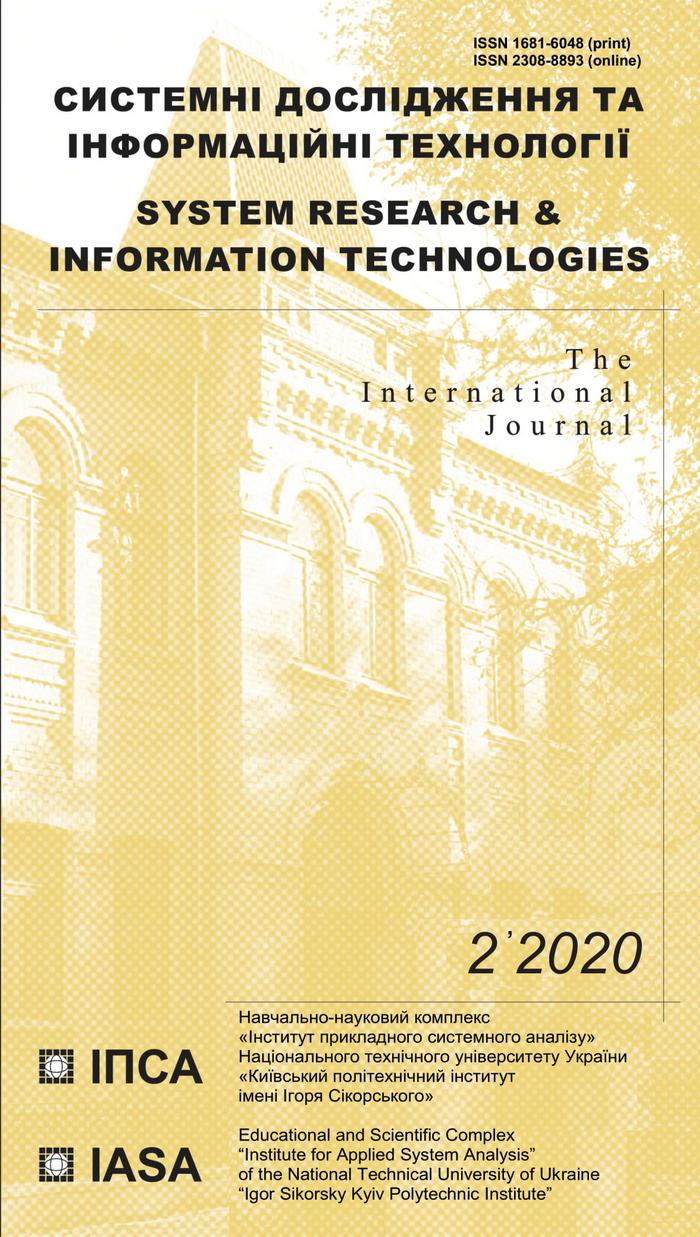Neural network modeling and optimization of technological parameters of contact spot welding
DOI:
https://doi.org/10.20535/SRIT.2308-8893.2020.2.08Keywords:
neural network model, optimization, simplex search, spot welded joints, core diameter, defectiveness levelAbstract
A method is proposed for establishing the optimal values of technological process parameters when solving the inverse multivariate regression problem based on neural network modeling and the simplex search algorithm. The practical application of the method is implemented using the contact spot welding process as an example. It aims to optimize the design parameter – the core diameter of welded joints to reduce their defects during serial production.References
M.D. Banov, Technology and equipment of contact welding. Moscow, Russia: Academy, 2008.
K.A. Kochergin, Contact welding. Leningrad, Russia: Mashinostroenie, 1987.
V.P. Burmistrov, Quality assurance of one-piece connections and semi-finished products. Leningrad, Russia: Mashinostroenie, 1985.
V.N. Volchenko, Assessment and quality control of welded joints using statistical methods. Moscow, Russia: Standards Publishing House, 1974.
S.N. Kozlovsky, Fundamentals of the theory and technology of programmed modes for resistance spot welding. Krasnoyarsk, Russia: SibGAU, 2006.
R.F. Kataev, V.S. Milyutin, and M.G. Bliznik, Theory and technology of contact welding. Yekaterinburg, Russia: Ural university Publishing House, 2015.
GOST 15878-79 Contact welding. Welded connections. Structural elements and dimensions. Moscow, Russia: Standards Publishing House, 1979.
A.M. Tsirlin, Optimal control of technological processes. Moscow, Russia: Energoatomizdat, 1986.
S.S. Fedin, N.A. Zubretska, “Neural network modeling and optimization of product quality by technological parameters”, in IX International scientific-practical conf. Technical regulation, metrology and information technologies, Odessa, 2019, pp. 103–105.
V.P. Borovikov et al., Neural networks. STATISTICA Neural Networks: Methodology and Technologies of Modern Data Analysis. Moscow, Russia: Hotline-Telecom, 2008.
T. Shup, Solving Engineering Problems on a Computer: A Practical Guide. Moscow, Russia: Mir, 1982.
L.P. Andreeva, V.V. Ovchinnikov, and A.A. Sidorov, “Optimization of the spot joints size in electric contact welding of aluminum alloys”, Modern materials, equipment and technologies, vol. 3, no. 3, pp. 23–32, 2015.
V.V. Ovchinnikov and V.I. Ryazantsev, Technological bases of light alloys resistance welding. Moscow, Russia: MGIU, 2006.
V.I. Ryazantsev, B.B. Zolotarev, “The dependence of the cyclic strength of spot welded joints on the dimensions of the cast core”, Automatic welding, no. 3, pp. 26–28, 1981.
M.I. Zhaldak and Yu.V. Trius. Fundamentals of theory and methods of optimization. Cherkasy, Ukraine: Brahma-Ukraine, 2005.
A.V. Nazarov and A. I. Loskutov, Neural network algorithms for forecasting and optimizing systems. St. Petersburg, Russia: Science and Technology, 2003.
M.S. Slobodyan, “Methods of creating permanent joints of zirconium alloys in reactor construction (review)”, Non-ferrous metals, no. 10, pp. 43–50, 2016. doi: http://dx.doi.org/10.17580/tsm.2016.10.06)
Aluminum D16AT [Online]. Available: https://nfmetall.ru/articles/48.html. Accessed on: March 15, 2020.
A.I. Galushkin, Theory of neural networks. Moscow, Russia: IPRZhR, 2000.
V.V. Kruglov and V.V. Borisov, Artificial neural networks. Theory and practice. Moscow, Russia: Hotline-Telecom, 2001.
L.N. Yasnitsky, Introduction to artificial intelligence. Moscow, Russia: “Academy”, 2005.

